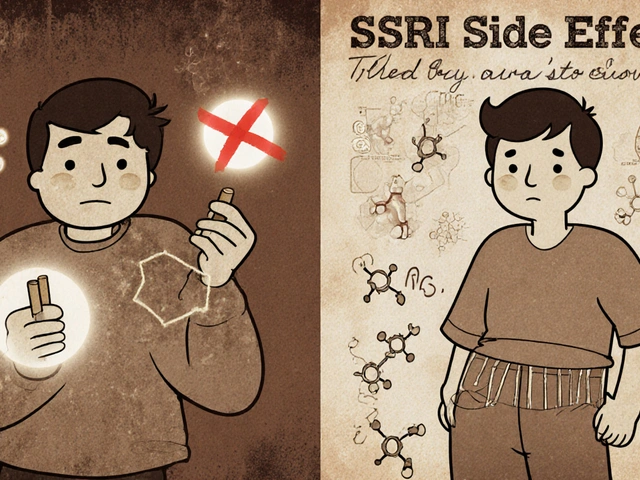Fenofibrate: What It Is, How It Works, and How to Use It Safely
If your doctor mentioned fenofibrate, you’re probably dealing with high cholesterol or triglycerides. Fenofibrate is a pill that helps lower bad fats in your blood and raises good cholesterol. It works by activating a protein called PPAR‑α, which tells your liver to break down fatty acids faster.
When Doctors Prescribe Fenofibrate
Typical reasons to start fenofibrate include:
- Very high triglyceride levels that threaten your pancreas.
- Mixed‑type dyslipidemia where both LDL (bad cholesterol) and triglycerides are high.
- Patients who can’t tolerate statins or need extra fat‑lowering power.
It’s not a first‑line drug for everyone, but it’s a solid option when diet and exercise alone aren’t enough.
How to Take Fenofibrate Correctly
Follow these simple steps to get the best results and avoid stomach upset:
- Take the tablet with a full glass of water after a meal. Food helps absorption and reduces nausea.
- If you’re on the extended‑release version, don’t crush or split the tablet – the coating is important.
- Stick to the same time each day. Consistency keeps blood levels stable.
The usual adult dose is 160 mg once daily, but doctors may adjust it based on blood tests. Always let your doctor know about any liver or kidney problems before starting.
Common Side Effects and What to Watch For
Most people feel fine, but some notice mild issues like:
- Stomach cramps or gas.
- Headache.
- Muscle soreness (rare, but report it right away).
Serious reactions such as gallstones or liver inflammation are uncommon but possible. If you notice yellowing of the skin or dark urine, call your doctor immediately.
Drug Interactions to Keep in Mind
Fenofibrate can interact with a few other meds. Tell your doctor if you’re taking:
- Blood thinners like warfarin – fenofibrate may increase bleeding risk.
- Statins – the combo can raise the chance of muscle problems.
- Niacin or bile‑acid sequestrants – they may lower fenofibrate’s effectiveness.
Always share a complete medication list, including over‑the‑counter supplements.
Tips for Success on Fenofibrate
To make the most of your treatment, combine the pill with lifestyle habits:
- Cut back on sugary drinks and refined carbs – they spike triglycerides.
- Eat more omega‑3 rich foods like salmon, walnuts, and flaxseed.
- Stay active – even a 30‑minute walk most days helps lower fat levels.
Schedule blood tests every 3‑6 months as your doctor advises. These results tell you if the dose needs tweaking.
Quick FAQ
Can I drink alcohol while on fenofibrate? Moderate intake isn’t a strict rule, but heavy drinking can raise triglycerides and stress the liver, so keep it low.
Do I need to stop the drug before surgery? Usually not, but let your surgeon know you’re on fenofibrate in case of special instructions.
What if I miss a dose? Take it as soon as you remember, unless it’s almost time for the next dose. Then just skip the missed one – don’t double up.
Fenofibrate can be a helpful tool for controlling dangerous blood fats. By taking it with food, monitoring side effects, and pairing it with a heart‑healthy lifestyle, you give yourself the best chance at lower numbers and fewer complications.

Tricor (Fenofibrate) Guide: Uses, Dosage, Side Effects & FAQs
Learn what Tricor is, how it works, proper dosing, common side effects, and answers to the most asked questions about this cholesterol‑lowering drug.
Read More




